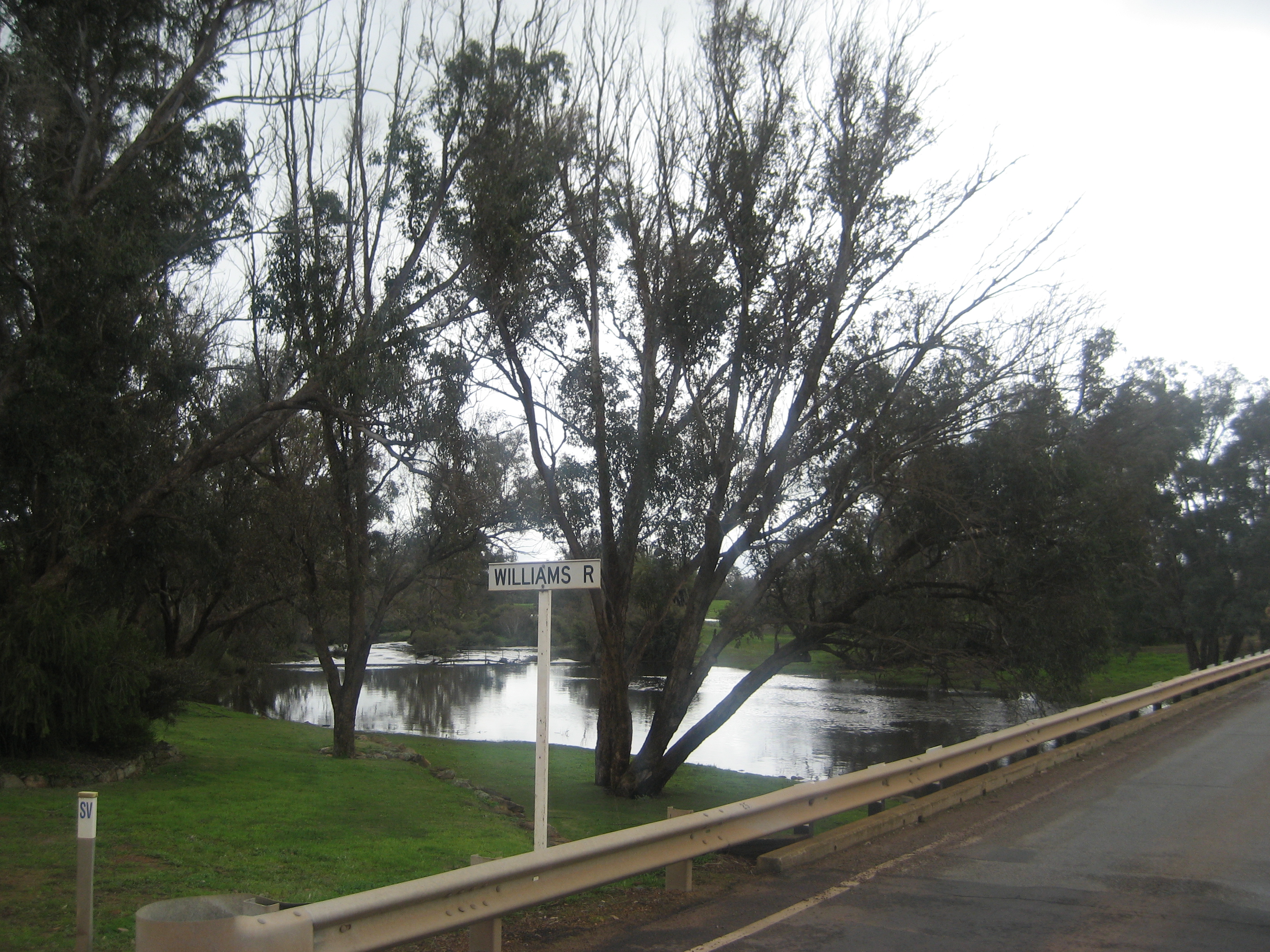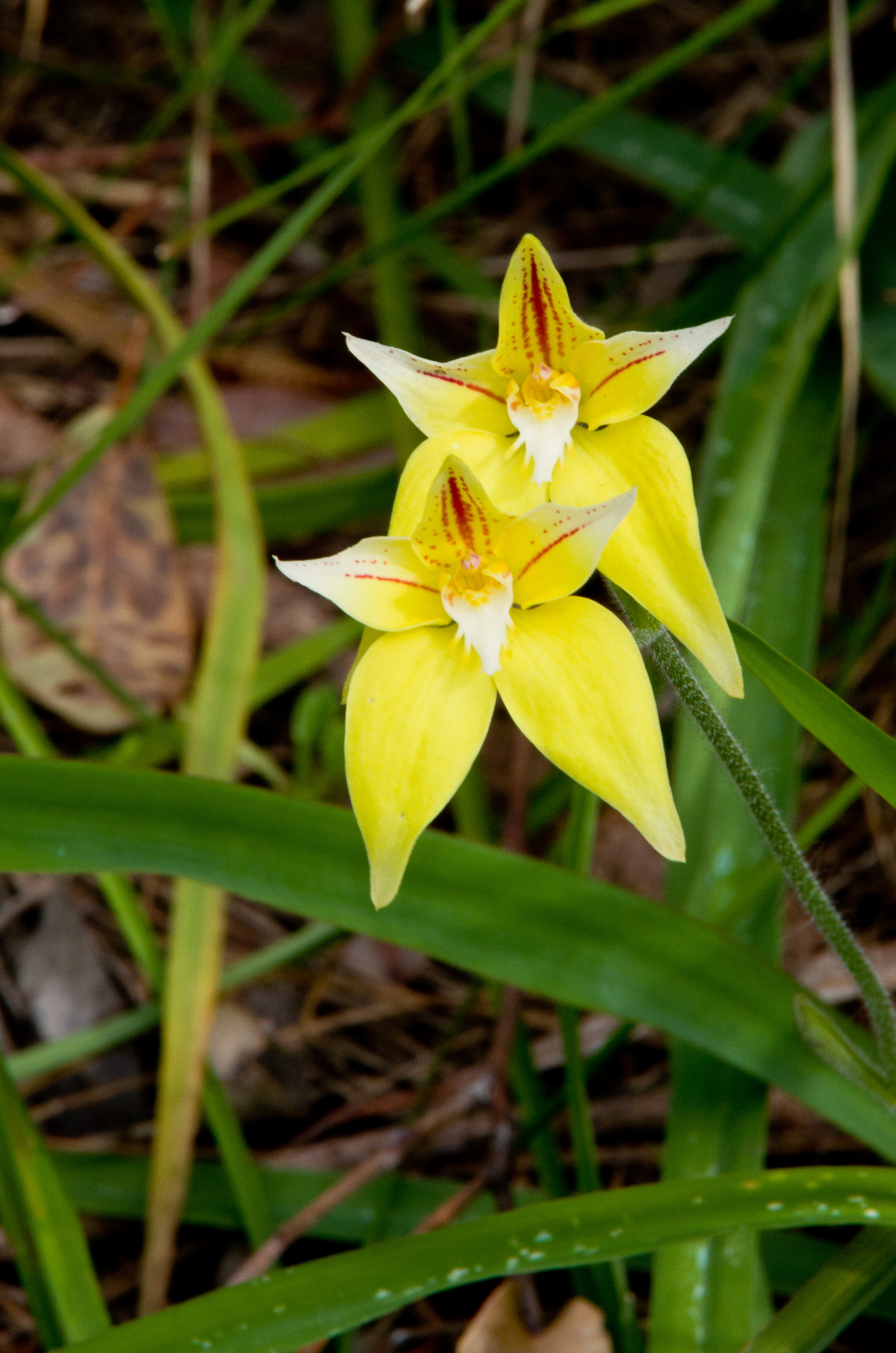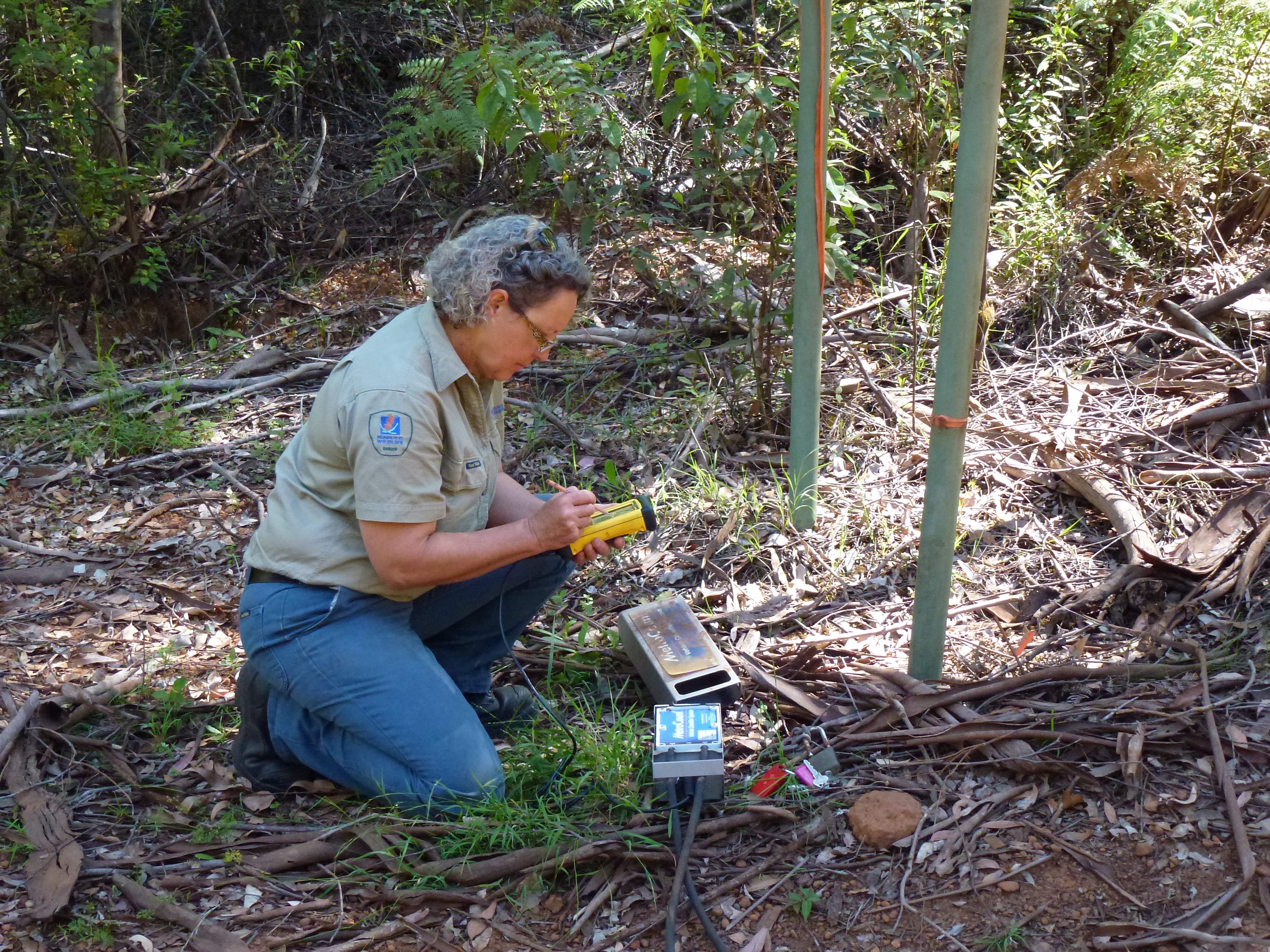|
Caladenia Longiclavata
''Caladenia longiclavata'', commonly known as the clubbed spider orchid, is a species of plant in the orchid family, Orchidaceae and is endemic to the south-west of Western Australia. It is a widespread and common orchid with a single, hairy leaf and one or two greenish-yellow, white and red flowers and which grows in the area between Perth and Albany. Description ''Caladenia longiclavata'' is a terrestrial, perennial, deciduous, herb with an underground tuber and a single hairy leaf, long and about wide. One or two greenish-yellow, white and red flowers are produced on the end of a flowering stem tall. The flowers are long and wide. The sepals and petals have flattened, club-like, yellowish-brown glandular tips long. The dorsal sepal is erect, long and wide. The lateral sepals are long, wide, turn stiffly downwards and are nearly parallel to each other. The petals are slightly shorter and narrower than the sepals and curve stiffly downwards. The labellum is long ... [...More Info...] [...Related Items...] OR: [Wikipedia] [Google] [Baidu] |
Williams, Western Australia
Williams is a town located in the Wheatbelt region of Western Australia, south-southeast of the state capital, Perth along Albany Highway and 32 kilometres (20 mi) west of Narrogin. The Williams River passes through the town. At the 2016 census, Williams had a population of 411. History Williams is named after the Williams River that flows nearby. The river was sighted by Captain Thomas Bannister in 1831 while leading the first overland expedition from the Swan River Colony to King George Sound (now Albany), and was first shown on an 1833 map. More than likely, the name honours King William IV, who reigned in the United Kingdom from June 1830 until June 1837. The first British claims on land in the area occurred in 1832. In 1835 a party led by Governor James Stirling and John Septimus Roe surveyed a route joining King George Sound with York via Williams to encourage inland settlement. No settlement occurred until after Lieutenant Henry Bunbury explore ... [...More Info...] [...Related Items...] OR: [Wikipedia] [Google] [Baidu] |
Dorsal
Dorsal (from Latin ''dorsum'' ‘back’) may refer to: * Dorsal (anatomy), an anatomical term of location referring to the back or upper side of an organism or parts of an organism * Dorsal, positioned on top of an aircraft's fuselage * Dorsal consonant, a consonant articulated with the back of the tongue * Dorsal fin A dorsal fin is a fin located on the back of most marine and freshwater vertebrates within various taxa of the animal kingdom. Many species of animals possessing dorsal fins are not particularly closely related to each other, though through c ..., the fin located on the back of a fish or aircraft * Dorsal transcription factor, a maternally synthesized transcription factor {{disambig de:Dorsale fr:Dorsale it:Dorsale ... [...More Info...] [...Related Items...] OR: [Wikipedia] [Google] [Baidu] |
Orchids Of Western Australia
Among the many wildflowers in Western Australia, there are around four hundred species of orchids. Early identifications One of the first botanists to study Western Australia was Archibald Menzies, aboard HMS ''Discovery'', who explored King George Sound in 1791. Many of the samples (including orchids) were lost in the return to England, but those that did survive were documented in ''Prodromus Florae Novae Hollandiae et Insulae Van Diemen'', published by Robert Brown in 1810. The first three orchids from Western Australia to be named were ''Caladenia menziesii'' (now '' Leptoceras menziesii''), '' Caladenia flava'', and ''Diuris longifolia''. In 1802 Robert Brown himself collected 500 specimens of flora from Western Australia, including: * ''Diuris emarginata'' var. ''emarginata'' * ''Diuris emarginata'' var. ''pauciflora'' *''Diuris setacea'' *'' Epiblema grandiflorum'' *'' Microtis alba'' *'' Microtis media'' *''Microtis pulchella'' *'' Prasophyllum gibbosum'' *'' Prasop ... [...More Info...] [...Related Items...] OR: [Wikipedia] [Google] [Baidu] |
Caladenia
''Caladenia'', commonly known as spider orchids, is a genus of 350 species of plants in the orchid family, Orchidaceae. Spider orchids are terrestrial herbs with a single hairy leaf and a hairy stem. The labellum is fringed or toothed in most species and there are small projections called calli on the labellum. The flowers have adaptations to attract particular species of insects for pollination. The genus is divided into three groups on the basis of flower shape, broadly, spider orchids, zebra orchids and cowslip orchids, although other common names are often used. Although they occur in other countries, most are Australian and 136 species occur in Western Australia, making it the most species-rich orchid genus in that state. Description Orchids in the genus ''Caladenia'' are terrestrial, perennial, deciduous, sympodial herbs with a few inconspicuous, fine roots and a tuber partly surrounded by a fibrous sheath. The tuber produces two "droppers" which become daughter tubers ... [...More Info...] [...Related Items...] OR: [Wikipedia] [Google] [Baidu] |
Department Of Parks And Wildlife (Western Australia)
The Department of Parks and Wildlife (DPaW) was the department of the Government of Western Australia responsible for managing lands described in the ''Conservation and Land Management Act 1984'' and implementing the state's conservation and environment legislation and regulations. The minister responsible for the department was the Minister for the Environment (Western Australia), Minister for the Environment. History The Department of Environment and Conservation (Western Australia), Department of Environment and Conservation (DEC) was separated on 30 June 2013, forming the Department of Parks and Wildlife (DPaW) and the Department of Environment Regulation (DER), both of which commenced operations on 1 July 2013. DPaW focused on managing multiple use state forests, national parks, marine parks and reserves. DER focused on environmental regulation, approvals and appeals processes, and pollution prevention. It was announced on 28 April 2017 that the Department of Parks and Wi ... [...More Info...] [...Related Items...] OR: [Wikipedia] [Google] [Baidu] |
IBRA
The Interim Biogeographic Regionalisation for Australia (IBRA) is a biogeographic regionalisation of Australia developed by the Australian government's Department of Sustainability, Environment, Water, Population, and Communities. It was developed for use as a planning tool, for example for the establishment of a national reserve system. The first version of IBRA was developed in 1993–94 and published in 1995. Within the broadest scale, Australia is a major part of the Australasia biogeographic realm, as developed by the World Wide Fund for Nature The World Wide Fund for Nature Inc. (WWF) is an international non-governmental organization founded in 1961 that works in the field of wilderness preservation and the reduction of human impact on the environment. It was formerly named the Wor .... Based on this system, the world is also split into 14 terrestrial habitats, of which eight are shared by Australia. The Australian land mass is divided into 89 bioregions and 4 ... [...More Info...] [...Related Items...] OR: [Wikipedia] [Google] [Baidu] |
Warren (biogeographic Region)
Warren, also known as Karri Forest Region and the Jarrah-Karri forest and shrublands ecoregion, is a biogeographic region in southern Western Australia. Located in the southwest corner of Western Australia between Cape Naturaliste and Albany, it is bordered to the north and east by the Jarrah Forest region. Its defining characteristic is an extensive tall forest of '' Eucalyptus diversicolor'' (karri). This occurs on dissected, hilly ground, with a moderately wet climate. Karri is a valuable timber and much of the karri forest has been logged over, but less than a third has been cleared for agriculture. Recognised as a region under the Interim Biogeographic Regionalisation for Australia (IBRA), and as a terrestrial ecoregion by the World Wide Fund for Nature, it was first defined by Ludwig Diels in 1906. Geography and geology The Warren region is defined as the coastal sandplain between Cape Naturaliste and Albany. Extending from the ocean to the edge of the Yilgarn crato ... [...More Info...] [...Related Items...] OR: [Wikipedia] [Google] [Baidu] |
Swan Coastal Plain
The Swan Coastal Plain in Western Australia is the geographic feature which contains the Swan River as it travels west to the Indian Ocean. The coastal plain continues well beyond the boundaries of the Swan River and its tributaries, as a geological and biological zone, one of Western Australia's Interim Biogeographic Regionalisation for Australia (IBRA) regions.IBRA Version 6.1 data It is also one of the distinct physiographic provinces of the larger West Australian Shield division. Location and description The coastal plain is a strip on the Indian Ocean coast directly west of the[...More Info...] [...Related Items...] OR: [Wikipedia] [Google] [Baidu] |
Jarrah Forest
Jarrah forest is tall open forest in which the dominant overstory tree is '' Eucalyptus marginata'' (jarrah). The ecosystem occurs only in the Southwest Botanical Province of Western Australia Western Australia (commonly abbreviated as WA) is a state of Australia occupying the western percent of the land area of Australia excluding external territories. It is bounded by the Indian Ocean to the north and west, the Southern Ocean to .... It is most common in the biogeographic region named in consequence Jarrah Forest. Most jarrah forest contains at least one other co-dominant overstory tree; association with '' Corymbia calophylla'' is especially common, and results in which is sometimes referred to as jarrah-marri forest. Considerable amount of research delineates northern, central and southern jarrah forestStrelein, G. J. (1988) ''Site classification in the Southern jarrah forest of Western Australia'' Como, W.A. Dept. of Conservation and Land Management, Western Austral ... [...More Info...] [...Related Items...] OR: [Wikipedia] [Google] [Baidu] |
Esperance Plains
Esperance Plains, also known as Eyre Botanical District, is a biogeographic region in southern Western Australia on the south coast between the Avon Wheatbelt and Hampton bioregions, and bordered to the north by the Mallee region. It is a plain punctuated by granite and quartz outcrops and ranges, with a semi-arid Mediterranean climate and vegetation consisting mostly of mallee-heath and proteaceous scrub. About half of the region has been cleared for intensive agriculture. Recognised as a bioregion under the Interim Biogeographic Regionalisation for Australia (IBRA), it was first defined by John Stanley Beard in 1980. Geography and geology The Esperance Plains may be roughly approximated as the land within of the coast between Albany and Point Culver on the south coast of Western Australia. It has an area of about , making it about 9% of the South West Province, 1% of the state, and 0.3% of Australia. It is bounded to the north by the Mallee region, and to the wes ... [...More Info...] [...Related Items...] OR: [Wikipedia] [Google] [Baidu] |
Avon Wheatbelt
The Avon Wheatbelt is a bioregion in Western Australia. It has an area of . It is considered part of the larger Southwest Australia savanna ecoregion. Geography The Avon Wheatbelt bioregion is mostly a gently undulating landscape with low relief. It lies on the Yilgarn Craton, an ancient block of crystalline rock, which was uplifted in the Tertiary and dissected by rivers. The craton is overlain by laterite deposits, which in places have decomposed into yellow sandplains, particularly on low hills. Steep-sided erosional gullies, known as breakaways, are common. Beecham, Brett (2001). "Avon Wheatbelt 2 (AW2 - Re-juvenated Drainage subregion)" in ''A Biodiversity Audit of Western Australia’s 53 Biogeographical Subregions in 2002''. Department of Conservation and Land Management, Government of Western Australia, November 2001. Accessed 15 May 2022/ref> In the south and west (the Katanning subregion), streams are mostly perennial, and feed rivers which drain westwards to empty i ... [...More Info...] [...Related Items...] OR: [Wikipedia] [Google] [Baidu] |
Latin
Latin (, or , ) is a classical language belonging to the Italic branch of the Indo-European languages. Latin was originally a dialect spoken in the lower Tiber area (then known as Latium) around present-day Rome, but through the power of the Roman Republic it became the dominant language in the Italian region and subsequently throughout the Roman Empire. Even after the fall of Western Rome, Latin remained the common language of international communication, science, scholarship and academia in Europe until well into the 18th century, when other regional vernaculars (including its own descendants, the Romance languages) supplanted it in common academic and political usage, and it eventually became a dead language in the modern linguistic definition. Latin is a highly inflected language, with three distinct genders (masculine, feminine, and neuter), six or seven noun cases (nominative, accusative, genitive, dative, ablative, and vocative), five declensions, four ... [...More Info...] [...Related Items...] OR: [Wikipedia] [Google] [Baidu] |







